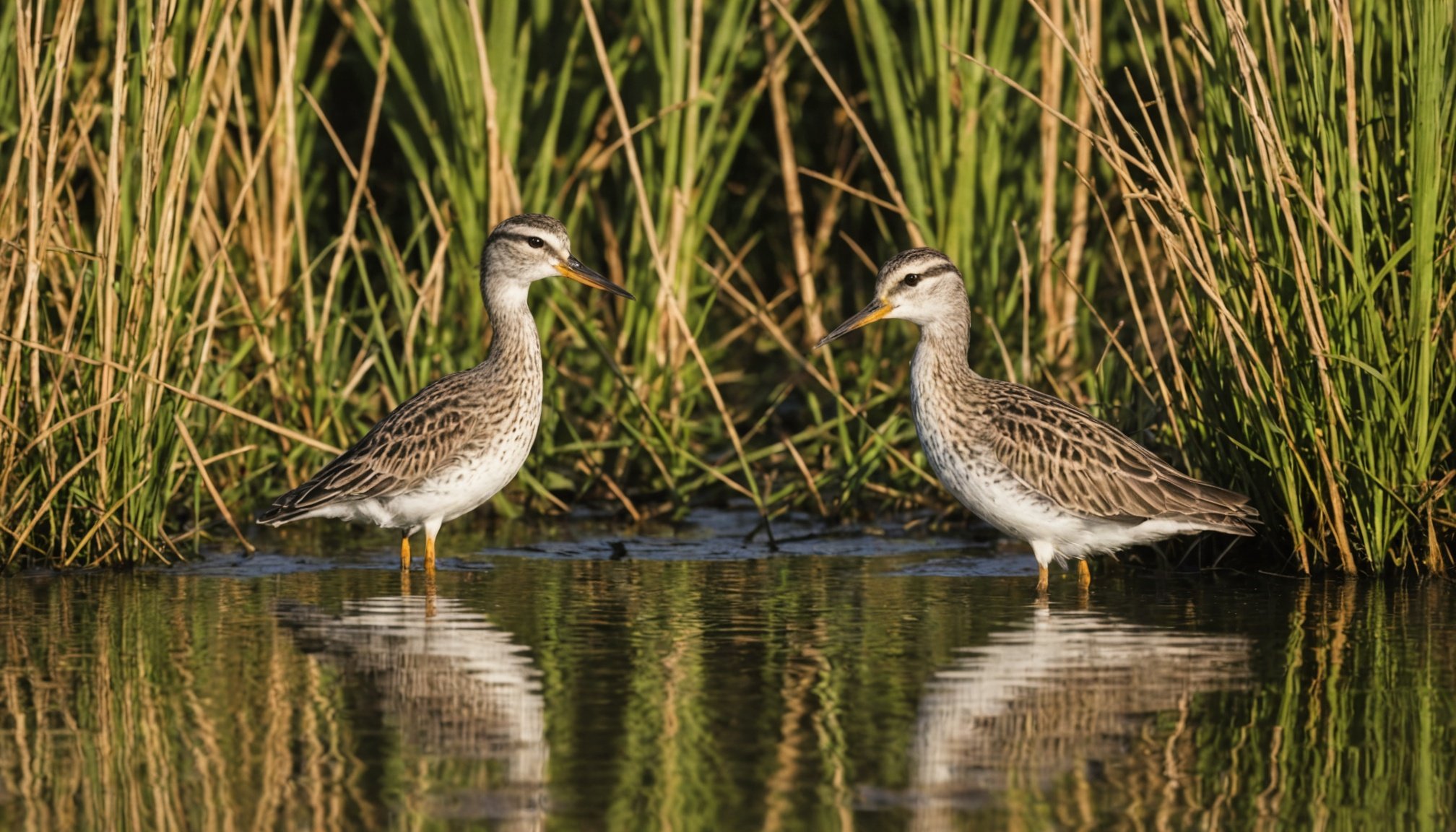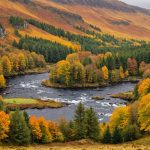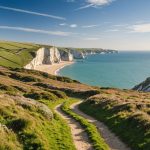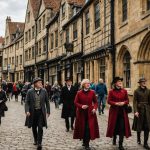Top Birdwatching Locations in Norfolk Broads National Park
The Norfolk Broads National Park is a treasured sanctuary for birdwatchers, offering some of the best spots to engage with avian wildlife. Among the top locations is Ranworth Broad, renowned for its panoramic views from the floating Broads Wildlife Centre. This spot provides excellent access to observe a diversity of bird species, particularly during summer when the marsh harriers are active.
Another prime location is Hickling Broad, the largest Broads reserve. Its diverse habitats make it a haven for spotting bitterns and bearded tits. Accessible trails such as the Weavers’ Way allow birdwatchers to enjoy a leisurely walk while observing the vibrant bird life.
Also to read : Uncover the natural beauty of the peak district: experience an enchanting guided photography adventure!
Strumpshaw Fen offers unique access points through quiet reedbeds where you might catch a glimpse of the elusive kingfisher. This location is part of the RSPB reserves, providing guided paths for an optimal viewing experience.
For an immersive journey, recommended routes like the Wherryman’s Way provide a blend of landscape and birdwatching opportunities. These trails are ideal for catching sight of wintering wildfowl. By exploring these top locations, birdwatchers can appreciate the area’s rich biodiversity and enjoy a fulfilling experience.
Also read : Experience the best places for genuine scottish ceilidh dancing adventures!
Notable Bird Species to Observe
The Norfolk Broads is a haven for diverse bird species, making wildlife watching a fascinating activity. Among the common inhabitants, you will find mallards and coots gracefully navigating the waterways. For enthusiasts keen on spotting rare species, the bittern’s unique booming call can be heard around Hickling Broad’s reedbeds. This elusive bird, with its distinct camouflage, proves a thrilling challenge for those into bird identification.
Seasonal migrations offer a dynamic birdwatching experience, especially during spring and autumn when vibrant flocks of migratory birds pass through. It’s the perfect time to witness flocks of swallows and house martins darting across the sky. Winter offers another treat as wildfowl, including wigeons and teal, flock to the region.
To enhance your bird identification skills, carry a reliable guidebook or use mobile apps specifically designed for birdwatchers. Familiarising yourself with bird calls and songs is equally beneficial. Observing bird habitats, such as woodland for warblers or marshes for waterfowl, increases the likelihood of successful sightings. Understanding the subtle differences in plumage and behaviour is key to identifying and appreciating the extensive bird species thriving in the Norfolk Broads.
Practical Tips for Birdwatchers
Venturing into the Norfolk Broads for birdwatching can be a rewarding experience with the right preparation. Begin by assembling your essential gear: a good pair of binoculars, a lightweight field guide, and perhaps a camera for capturing treasured moments. Comfortable, weather-appropriate clothing is key to enjoying your day, along with waterproof gear to tackle the variable English weather.
Timing is crucial; early mornings often present the best chances for engaging bird activity. During these hours, the softer light also enhances visibility and helps identify bird species. Keeping an eye on the weather forecast can guide you on the ideal conditions for your excursion. Cloudy yet stable weather often encourages birds to be active and visible.
Respecting nature is paramount. Keep a good distance from the birds, minimising disturbances, especially during nesting seasons. If photographing, use longer lenses to avoid encroaching on their space. Keeping noise levels low can improve your chances of observing wildlife in their natural behaviours.
By following these birdwatching tips, your visit to the Norfolk Broads can be both respectful and enriching, offering an intimate glimpse into the vibrant avian life thriving in this magnificent park.
Guided Tours and Resources
Exploring the Norfolk Broads is enhanced by joining birdwatching tours that cater to both novice and seasoned enthusiasts. These guided experiences offer insights into the region’s unique avian populations, ensuring you won’t miss out on hidden treasures among the reedbeds and waterways.
Local guides often lead these tours, sharing their extensive knowledge of the best spots for birdwatching. They highlight premier viewing areas and assist in identifying the various bird species within the park. With their guidance, you can fully immerse in the spectacular wildlife the Norfolk Broads offer.
Several wildlife organizations operate within the park, dedicated to preserving its natural beauty and diverse species. They provide valuable resources, including informative maps and digital tools, to aid in navigation and enhance your birdwatching experience. Engaging with these organizations can deepen your understanding of the park’s ecological significance.
For independent exploration, access to up-to-date maps and digital resources is crucial. Utilizing online guides and apps can allow for thoroughly planned routes and ensure access to top birdwatching locations. Whether accompanied by a guide or venturing solo, these resources will enrich your visit to the Norfolk Broads.
Personal Experiences and Anecdotes
Nothing compares to the thrill of spotting a rare bird species in the Norfolk Broads. One avid birdwatcher shared the exhilarating moment of encountering a bittern—its distinctive, silent glide over the reedbeds appeared almost mystical. Such moments are why birdwatching in the park leaves an indelible mark on enthusiasts.
A particularly memorable encounter involved a flock of migratory swallows darting in synchrony over Hickling Broad. This dance painted the sky with swift, precise movements, a spectacle only nature can choreograph. Observers often recall the distinctive calls of marsh harriers, an auditory delight that signals the presence of these majestic birds swirling above.
These experiences highlight not only visual majesty but also the profound tranquillity brought by immersing oneself in nature. Such narratives inspire both novice and seasoned birdwatchers to explore more of what the Norfolk Broads has to offer.
For those yet to visit, these personal insights emphasize the profound connection one develops with the environment while birdwatching. Each sighting becomes a cherished memory, sparking an ongoing appreciation and curiosity to learn more about the avian life in this captivating park.
Photography Opportunities in Norfolk Broads
Birdwatching in the Norfolk Broads isn’t just about watching – it’s the perfect place for capturing stunning bird photography. With its varied landscapes and vibrant wildlife, you’ll find diverse vantage points to create breathtaking images. The floating platforms at Ranworth Broad offer an expansive view perfect for capturing sweeping shots of marsh harriers.
For those with a keen interest in photography, dawn and dusk provide the most suitable conditions for capturing birds. During these times, the soft light reduces glare and casts warm tones, enhancing your images. Photographing early also capitalizes on the heightened bird activity, offering opportunities to freeze moments of lively behavior.
To capture bird movement and nuanced behaviors, focus on using a fast shutter speed. A longer lens allows for detailed shots from a distance, keeping both bird and photographer comfortable. This ensures you capture each feather and movement without disturbing the wildlife. Utilising burst mode can further help in capturing fast-paced movements, especially useful for photographing flocks in motion.
Strategically placed hides, like those at Hickling Broad, offer concealment, ensuring minimal intrusion while you focus on your subject. These practices will elevate your bird photography in the enchanting Norfolk Broads.











